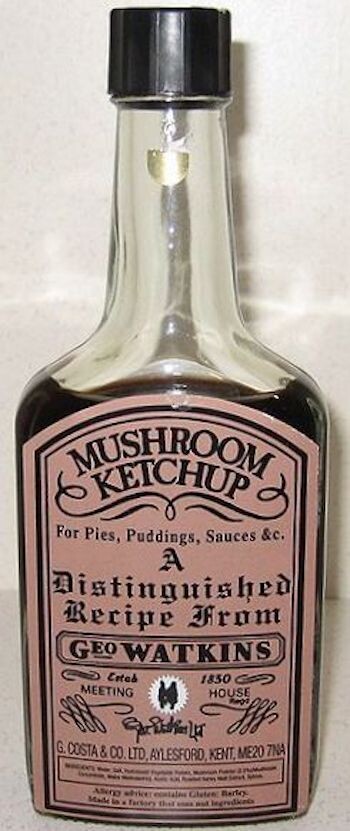Ketchup Was the Trendiest Medicine Of The 1830s

It took a long time for Europeans to accept that tomatoes were just fruits. In a previous edition of the unplanned saga “Cracked Talks Tomatoes,” we discussed how the first Europeans and American colonists to encounter tomatoes were convinced they were poisonous. Until around the 1830s, they were absolutely certain that tomatoes were red with the blood of the poor souls who ate them.
So it should come as no surprise that when Europeans and European-Americans finally came to terms with the fact that tomatoes weren’t poisonous, they still blew them way out of proportion. For a brief moment, from 1834 to around 1850, tomatoes were the hottest medicine in the United States in the form of ketchup.
Before ketchup was the most controversial hot dog condiment, it wasn’t even made with the signature fruit we all know it for today. Different stories explain the sauce’s origins, but eventually, versions of ketchup were made by the British. However, these sauces were made with mushrooms or walnuts rather than tomatoes. This meant that ketchup was known for being colors other than its signature red long before Heinz attempted their blue and green abomination ketchup of the year 2000.

In the early 19th century, tomato ketchup finally came to be. Y’know, once everyone got over thinking tomatoes were going to kill them. One physician from Ohio named John C. Bennett decided that tomato ketchup was not only tasty; it was a game-changing medical innovation. In 1834, Bennett began selling tomato ketchup as a medicine. Much like every other fake medicine from the era, Bennett claimed that it could cure ailments like rheumatism and diarrhea.
Ketchup then became a medical fad. Bennett worked with a pill producer named Archibald Miles to make pill versions of his tomato ketchup, which became known as Extract of Tomato. Tomato-based medicine continued to spread, and newspapers published accounts of ketchup users finding relief from all sorts of pain and discomfort. This continued up until 1850.

Alas, Icarus flew too close to the giant tomato in the sky, and the empire of ketchup medicine collapsed. Other ketchup pushers entered the market, and while Bennett’s medical claims were fairly out there, these new ketchup salesmen were just outlandish. They claimed that their tomato pills could even heal broken bones, somehow. Studies were conducted by people other than Bennett about the benefits of tomatoes and ketchup, and none of the benefits that Bennett or other salesmen listed were found to be true. With these studies and a whole decade and a half of no results, the public gave up on medical ketchup.
This end of a ketchup era didn’t mean that the product as a whole went away, though. Sure, no one buys ketchup pills anymore, but there was still a demand for the product because, well, ketchup tastes good. Heinz started selling ketchup in 1876, and tomato ketchup gained traction as a non-medicinal condiment.
Top Image: Visitor7/Wiki Commons





